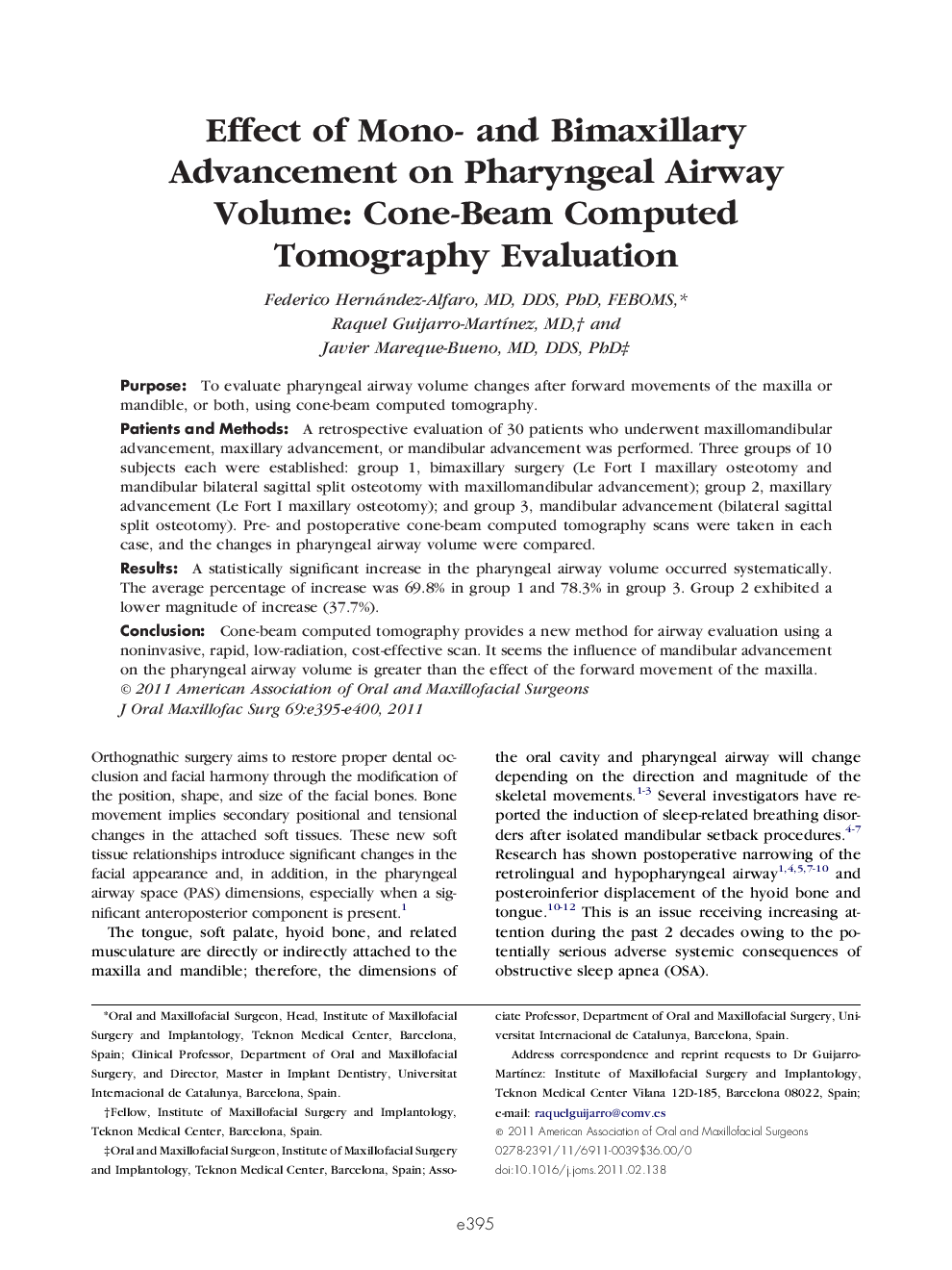| Article ID | Journal | Published Year | Pages | File Type |
|---|---|---|---|---|
| 3154093 | Journal of Oral and Maxillofacial Surgery | 2011 | 6 Pages |
PurposeTo evaluate pharyngeal airway volume changes after forward movements of the maxilla or mandible, or both, using cone-beam computed tomography.Patients and MethodsA retrospective evaluation of 30 patients who underwent maxillomandibular advancement, maxillary advancement, or mandibular advancement was performed. Three groups of 10 subjects each were established: group 1, bimaxillary surgery (Le Fort I maxillary osteotomy and mandibular bilateral sagittal split osteotomy with maxillomandibular advancement); group 2, maxillary advancement (Le Fort I maxillary osteotomy); and group 3, mandibular advancement (bilateral sagittal split osteotomy). Pre- and postoperative cone-beam computed tomography scans were taken in each case, and the changes in pharyngeal airway volume were compared.ResultsA statistically significant increase in the pharyngeal airway volume occurred systematically. The average percentage of increase was 69.8% in group 1 and 78.3% in group 3. Group 2 exhibited a lower magnitude of increase (37.7%).ConclusionCone-beam computed tomography provides a new method for airway evaluation using a noninvasive, rapid, low-radiation, cost-effective scan. It seems the influence of mandibular advancement on the pharyngeal airway volume is greater than the effect of the forward movement of the maxilla.
